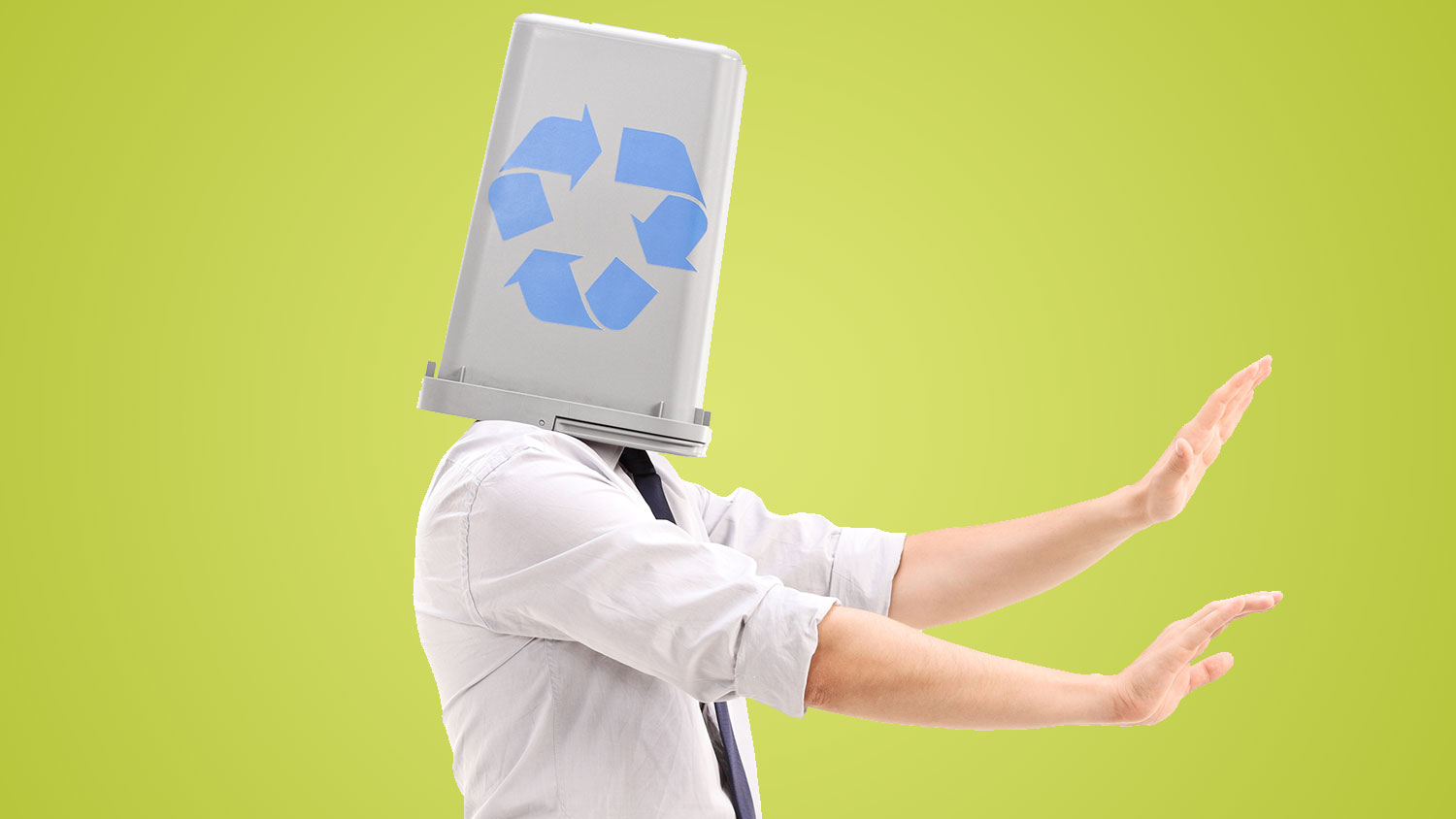Dearest Readers,
Occasionally, a theme emerges from the questions you so lovingly send me. Though you are separated by states and sometimes entire countries, somehow you are bound by common anxieties springing directly from the green zeitgeist.
This week, you are worried about throwing stuff away. You know well that “there is no away,” and you wish to handle disposal properly. I am at your service.
Q. I just replaced an old fluorescent fixture in my kitchen with an LED one, which I like very much. My question is how to dispose of the fluorescent tubes. The manager of my condo says for me to just put them in the dumpster. I am not sure that this is such a good idea, as I understand that the tubes contain mercury. What is your advice?
Stephen G.
Atlanta, GA
A. Dearest Stephen,
Your instincts are correct: Do NOT toss that fluorescent bulb in the dumpster. Fluorescent bulbs, whether they are of the tube variety or the more common CFL, do contain a small amount of mercury (about 4 milligrams per CFL). And it’s all too easy for an old bulb to be crushed inside the dumpster or the garbage truck, releasing toxic mercury vapor into the environment. This is especially bad news for any people who happen to be nearby when that inevitable break happens, as elemental mercury (as opposed to methylmercury, the kind that makes us think twice about eating tuna) can cause everything from tremors to headaches to cognitive problems.
In most if not all communities, fluorescent lights are therefore considered hazardous waste and should never be tossed out with the trash. Luckily, there are specialized facilities out there that can handle bulbs safely and recycle their components to shine another day. There are plenty near you, Stephen: Look here and here for the most convenient drop-off point. Non-Atlantans will find their own spots here.
If you can do so tactfully, please enlighten your condo manager as to the ABCs of proper fluorescent disposal. And do enjoy the new LED bulb — that lighting looks great on you.
Brightly,
Umbra
Q. Can you tell me the best way to dispose of daily wear contact lenses so they don’t end up in the waterways? I fret over flushing them down the toilet, putting them in the landfill (which borders the Mississippi River here in my town) or if I should just bury them in the ground once a year.
Cat T.
St. Paul, MN
A. Dearest Cat,
For all their sophisticated visionary powers, contacts are really just plastic. Soft lenses come from water-loving polymers called hydrogels; some of the newer types include silicone for extra oxygen permeability. Hard lenses are another type of plastic polymer, sometimes with added fluorine. They cannot be recycled. And you’re right, none of them belong cluttering up our waterways or in the bellies of our marine friends.
Do not flush your contacts down the toilet or rinse them down the sink. (I know many visually challenged people who feel this urge too, and I confess I don’t get it. Do you also try to flush your shampoo bottles down the toilet?) If the sewage treatment plant manages to screen them out, straight to the landfill they’ll go; if not, they have a one-way ticket to your local rivers and streams. Do not bury them in your backyard, either: Rain may wash them right into the waterways you wish to protect.
The best course of action in this case, unfortunately, is to throw them away. Landfills are designed to keep trash contained (though of course, they sometimes leak). At least some communities recycle the blister packs that lenses come in. If you are very concerned about the amount of eyeball-related waste you’re generating, Cat, you might consider switching to longer-lasting contacts or glasses if they’ll work for you. Glasses are so in right now.
20/20ly,
Umbra
Q. I’m going to keep this short. What’s the best way to dispose of half-used makeup products when the expiration date rolls around?
Carol
Vancouver
A. Dearest Carol,
They say brevity is the soul of wit, so I’m willing to bet you’re a really fun person to have at a cocktail party. Since I cannot have you over to the Fisk abode for cocktails, however, I will attempt to answer your question in the same spirit.
Makeup disposal is a bit tricky because many communities consider the catchall category of “cosmetics” to be potential household hazardous waste. Does this mean everything – lotion, nail polish, foundation, mascara, etc. – needs special disposal? Well, it depends. Flammable and/or chemical-laden products like nail polish, nail polish remover, aerosol deodorant, and hairspray are most likely to be branded toxic, but other potions might also join them. The quickest way to find out is to call your friendly neighborhood waste management team and ask.
Once you’ve separated the wheat from the chaff, keep the hazardous products in their original containers and get thee to your local drop-off center. As for the non-hazardous stuff: Wipe or rinse out the containers, toss the unused makeup, and recycle the receptacles. Some #5 plastic tubes and bottles, as well as glass containers, can go in curbside recycling. Whatever cannot be handled this way can be dropped off at an Origins store for recycling (they take all brands) or mailed away for recycling through Terracycle’s Personal Care and Beauty Brigade program. If you happen to enjoy Aveda products, they’ll take their own empties back, too.
Beautifully,
Umbra



